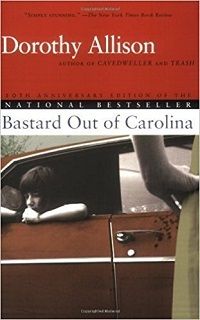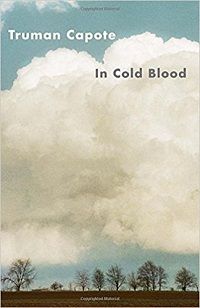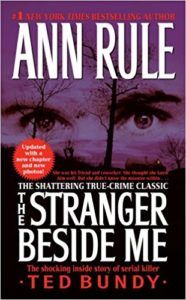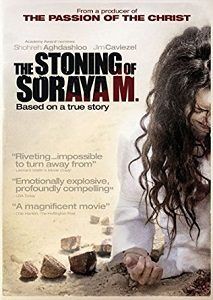“Torch Song” by Charles Bowden
Charles Bowden (both the essay’s author and speaker) is a journalist who takes the ledes that no one else wants. The stories of child murders, rapes, and other crimes alongside which the newspaper won’t run advertisements because no one wants their products to be associated with those crimes. After one such story, he says, “fifty subscribers cancel within an hour.” The essay shows how reporting those crimes had him enter the criminal world as a spectator and inadvertently became a part of it. He says: “I wonder if there is a monster lurking in all of us. I never cease, I realize, scanning faces when I prowl the city, and what I wonder is, Are you the one? I look over at the other cars when I am at a stoplight. This becomes an unconscious habit. Sometimes I think I have adopted the consciousness of a woman. Now I think like prey.” SCARY BECAUSE: This essay shows how even the most self-assured human’s empathy can make him impressionable. And that’s scary because it’s infectious.
Bastard Out of Carolina by Dorothy Allison
Although marketed as fiction, Dorothy Allison’s book Bastard Out of Carolina definitely falls into the category of real horror stories. Our protagonist (Bone) lives in rural South Carolina with an extended family who is, she says, “the bad poor.” Ultimately, this narrative is about a child who experiences emotional, physical, and sexual abuse at the hands of her stepfather, and her mother knows about it. As does the rest of her family. Bone says of her life: Growing up was like falling into a hole. The boys would quit school and sooner or later go to jail for something silly. I might not quit school, not while Mama had any say in the matter, but what difference would that make? What was I going to do in five years? Work in the textile mill? Join Mama at the diner? It all looked bleak to me. No wonder people got crazy as they grew up. SCARY BECAUSE: The hopelessness of Bone and her family is so complete that they take it in stride with laughter at the absurd. Even when the worst thing possible happens—and it definitely, definitely does—the family strategizes to move past it in the only ineffective ways they know. This story has a child protagonist and narrator, but it’s one of several true horror stories for adults only.
whoever fights monsters: my 20 years tracking serial killers for the fbi by Robert Ressler AND TOM SHACTMAN
Whoever Fights Monsters is a clinical sort of memoir by one of the FBI’s first to change criminal profiling into an actual science (rather than just racist and classist profiling, which it was until the late 1970s). I listened to this one on audiobook, and whenever I get a good audiobook, I clean my house so I don’t have to turn it off. This one had me standing at the sink with a dripping mop in my hand listening to the vampire killer of Sacramento’s story from the perspective of one of the men who helped find him. Note: Robert Ressler was Thomas Moore’s FBI consultant while he was writing Silence of the Lambs. This guy is amazing. Another note: The title comes from a section of Freidrich Nietschze’s Beyond Good and Evil: Whoever fights monsters should see to it that in the process he does not become a monster. And if you gaze long enough into the abyss, the abyss will gaze back into you. SCARY BECAUSE: This story happened as the world was figuring out how the minds of serial killers work. I’m the person screaming at the TV, “He’s right behind you!” during every horror movie, and in listening to this book, you know what will happen because of this guy’s research. It’s the opposite of false suspense. I really cannot oversell this one as one of the best true horror stories I’ve ever heard. (Honestly, the reason I ever go to cocktail parties as a plus one is on the very slim, one-in-a-billion chance of running into THIS GUY.)
In Cold Blood: a true account of a multiple murder and its consequences by Truman Capote
In Cold Blood might be among the first that comes to mind at the idea of real horror stories, but it’s our culture’s prototype for a reason: it is the best. Truman Capote has a close to eidetic memory, and even though he arrived on the scene after the mass murder of the Clutter family, his reconstruction of the events is powerful, horrific in its detail. (So horrific than when he read it aloud people actually fainted.) Not to mention that he falls so deeply in love with one of the killers that he convinces most of his readers of his innocence. Even the title implies senseless murder, and not just of the Clutters, but the murderers as well. Capote writes: “He remembered his first meeting with Perry in the interrogation room at Police Headquarters in Las Vegas—the dwarfish boy-man seated in the metal chair, his small booted feet not quite brushing the floor. And when Dewey now opened his eyes, that is what he saw: the same childish feet, tilted, dangling.” SCARY BECAUSE: Capote convinces his readers of a mass murderer’s innocence. That’s the power of storytelling, even of true horror stories, which is another dangerous and scary thing.
My Favorite Murder with Karen Kilgariff and Georgia Hardstark
This is a true crime podcast told by two dope comediennes. They claim to know nothing about anything, but this is the podcast that made me feel normal about wanting to know everything about true crime. (And it’s part of the inspiration behind co-founding this scary-movie podcast!) Karen and Georgia say: “Tell me all that shit so I can avoid it.” EXACTLY. I recommend the episode about Ronald DeFeo, or the true story behind the Amityville Horror films and books, but they’re all worth listening to. SCARY BECAUSE: This is the least-scary of the options here, not because the subjects are terrifying (they are!), but because it’s told in a comedic setting.
the Stranger Beside Me by Ann Rule
The Stranger Beside Me is another classic: Ann Rule, who was a professional crime writer, worked at a suicide hotline with Ted Bundy. Many years later, she was assigned to write about the case of the serial killer who lured pretty, slender, dark-haired women who parted their hair in the middle into his car and then raped and murdered them. Then she realized that murderer was her old friend, Ted. Talk about real horror stories! I mean, shit! Actual reader experience: Ted Bundy was imprisoned for these murders, and when I checked, I was only halfway through the book. It’s a saga. An impressive and horrible saga. SCARY BECAUSE: Ann Rule tells this story from the perspective of a close friend of one of the most prolific serial killers ever. She tries to honor their friendship because everyone else has abandoned him. That’s how charming Ted Bundy was.
The Stoning of Soraya M. by Freidoune Sahebjam
The Stoning of Soraya M. is based upon the book of the same title by French-Iranian journalist and war correspondent Freidoune Sahebjam. In the film, while stranded in a remote Iranian village, a woman tells a journalist of the death of her niece: Soraya was married to a man who wanted to divorce her and marry a 14-year-old girl. The man stopped at nothing to make his fantasy a reality, including blackmail, slander, and manipulation of antiquated adultery laws that ultimately result in a modern-day stoning. SCARY BECAUSE: Stoning. Biblical stoning. As in, stoning adulteresses, Old Testament style. AND. Even if you do everything right, your culture could turn against you just because it’s easier, more convenient. AND. Although the credibility of the film’s script is under some debate, the book is true enough to have been banned in Iran. That’s the end of my list, not because there aren’t more, awesome, true horror stories for adults who need to know all that shit so they can avoid it, but because, honestly, I’m cutting you off. Like a good bartender. Like a lifeguard. Don’t go over the edge. Take frequent breaks. Don’t read/watch/listen to these before bed. Make sure you process with a friend. But also…don’t stop reading them! We’ve got even more horror for you here. Besides, what would you talk about at your next cocktail party? It’s like Cormac McCarthy says in his, like, one interview ever, “If it doesn’t concern life and death…it’s not interesting.”




